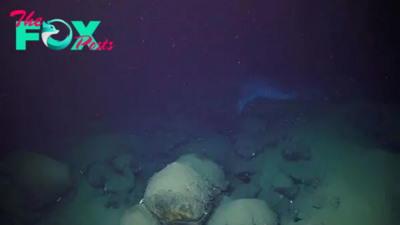Science
Earth from space: 'River of tea' bleeds into sea after Hurricane Sally smashes into US coast
Where is it? Winyah Bay, South Carolina. [33.19619564, -79.18145235].
What's in the photo? Tea-like "blackwater" flowing into the sea after Hurricane Sally.
Which satellite took the photo? Landsat 8.
When was it taken? October 1, 2020.
This 2020 satellite image shows tea-like "blackwater" bleeding into the sea from South Carolina's Winyah Bay around two weeks after Hurricane Sally made landfall and triggered widespread flash flooding.
Winyah Bay is a coastal estuary that's located near Georgetown, South Carolina, and flows into the Atlantic Ocean. It is fed by four blackwater rivers: the Waccamaw River, the Pee Dee River, the Black River and the Sampit River, all of which run through eastern South Carolina.
Blackwater rivers flow through swamps, wetlands, forests and other ecosystems that are rich with decaying vegetation. As it breaks down, this rotting vegetation releases chemicals such as tannin, phenol and humic acid, which stain the water brown — similar to brewing tea, according to NASA's Earth Observatory.
The staining material is known as colored dissolved organic matter (CDOM). After heavy rains, the floodwater gathers more CDOM and feeds into nearby rivers, before being washed into Winyah Bay and then flushed into the ocean.
Related: 12 amazing images of Earth from space

On Sept. 16, 2020, Hurricane Sally made landfall in Alabama with max winds of around 110 mph (177 km/h). The Category 2 storm dumped up to 30 inches (76 centimeters) of rain across Florida, Alabama, Georgia, South Carolina and Louisiana, triggering flash flooding in most of those states, according to a National Weather Service report.
On Oct. 1 (the day this photo was taken), monitoring stations in Winyah Bay revealed that the levels of CDOM in the estuary were more than 50% higher than average for that date. Most of the CDOM ended up in the ocean, according to NASA's Earth Observatory.
-

 Science20h ago
Science20h agoLake Kivu: The ticking time bomb that could one day explode and unleash a massive, deadly gas cloud
-

 Science1d ago
Science1d ago'Upwelling' deep in the mantle triggered magnitude 6.8 Morocco earthquake
-

 Science1d ago
Science1d agoThere's a 2nd El Niño — and scientists just figured out how it works
-

 Science1d ago
Science1d ago'Failed' microcontinent found hiding beneath Greenland and Canada
-

 Science1d ago
Science1d agoBoeing Starliner astronauts remain stuck on International Space Station with no set return date, NASA announces
-

 Science1d ago
Science1d agoWorld's loneliest tree species can't reproduce without a mate. So AI is looking for one hidden in the forests of South Africa.
-

 Science2d ago
Science2d ago'I'm as happy as I've ever been in my life': Why some people feel happiness near death
-

 Science2d ago
Science2d ago'Spectacular and definitely hazardous': Yellowstone geyser erupts, firing steam and debris over nearby tourists






















